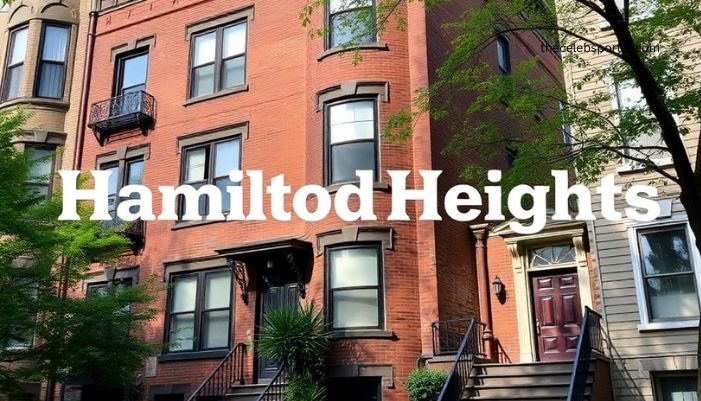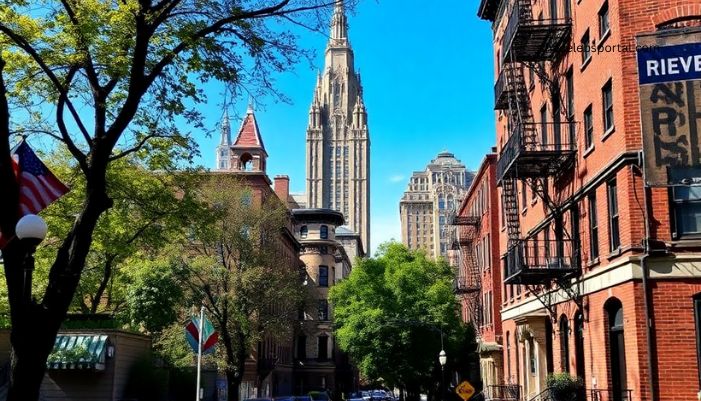Hamilton Heights, located in Upper Manhattan, is a neighborhood full of history and culture. It is known for its beautiful buildings, scenic streets, and diverse community. This blog will dive into the fascinating history of Hamilton Heights, its famous landmarks, and the people who made it special.
The Origins of Hamilton Heights
Hamilton Heights started as farmland in the early 1800s. It was part of the estate of the Hamilton family. The neighborhood grew quickly as New York City expanded. New roads and trains made it easier for people to move there. Over time, Hamilton Heights changed from farmland to a busy urban area.
The Start of the Neighborhood
In the 19th century, wealthy families began building homes in the area. The neighborhood grew as the city grew. By the late 1800s, the arrival of trains helped Hamilton Heights become a more developed part of New York City.
Famous Landmarks and Historic Significance
Hamilton Heights is home to many historic buildings. These landmarks tell the story of the neighborhood’s past. They show the architecture and culture that have shaped the area over time.
Alexander Hamilton’s Legacy
The most famous landmark in Hamilton Heights is the Hamilton Grange National Memorial. This was the home of Alexander Hamilton, a key figure in American history. His house is now a museum where visitors can learn about his life. The home was moved to preserve it and is now a reminder of Hamilton’s connection to the neighborhood.

Historic Architecture
Hamilton Heights is known for its grand buildings. Many of the old brownstones and mansions are still standing. These homes are part of the Hamilton Heights Historic District, a special area that helps protect the neighborhood’s old architecture.
Cultural and Artistic Influence
Hamilton Heights has always been a place for creativity. Many artists, writers, and musicians have lived and worked here. The neighborhood’s mix of cultures and influences has made it an important part of New York City’s arts scene.
Harlem Renaissance and Beyond
In the early 1900s, Hamilton Heights was part of the Harlem Renaissance, a time when Black artists, writers, and musicians thrived. Famous figures like Langston Hughes and W.E.B. Du Bois were connected to the area. Their work helped make Hamilton Heights a cultural hub.
Music and Nightlife
Hamilton Heights is also known for its music scene. The neighborhood is close to Harlem, which is famous for jazz music. Many jazz musicians lived and performed in Hamilton Heights. Today, the neighborhood still has a lively music culture, with local venues and performances.
A Diverse Community Today
Hamilton Heights has become a diverse and growing neighborhood. More young people, families, and creative individuals are moving in. The area offers a mix of old charm and new energy, making it one of the most exciting parts of New York City.
Growing Real Estate and Local Business
As more people move to Hamilton Heights, new businesses are opening. Cafes, restaurants, and shops are bringing fresh energy to the area. The real estate market has grown, too, as people seek affordable housing in a historic neighborhood.
Notable People from Hamilton Heights
Many famous people have come from Hamilton Heights. Some are artists, while others have excelled in politics and entertainment. The neighborhood has been home to many inspiring individuals.
Famous Residents
Here are a few notable people who have lived in Hamilton Heights:
| Name | Contribution |
|---|---|
| Alicia Keys | Grammy-winning singer and songwriter |
| James Baldwin | Renowned writer and social critic |
| Denzel Washington | Academy Award-winning actor |
| Kerry Washington | Actress known for her role in “Scandal” |
| Zora Neale Hurston | Influential author and anthropologist |
These individuals helped shape the world with their talents, and their connection to Hamilton Heights adds to the neighborhood’s cultural importance.
The Future of Hamilton Heights
Hamilton Heights is changing, but it still keeps its historic charm. As more people move in, the neighborhood is becoming a mix of the old and the new. The combination of history, culture, and growth makes Hamilton Heights an exciting place to be.
Conclusion: The Enduring Charm of Hamilton Heights
Hamilton Heights is a neighborhood full of history, culture, and community. From its beginnings as farmland to its current status as a lively urban area, the neighborhood has a unique story. Whether you’re exploring its historic buildings, enjoying its cultural scene, or simply walking its tree-lined streets, Hamilton Heights offers a glimpse into the past and present of New York City.
Frequently Asked Questions about Hamilton Heights
1. What is Hamilton Heights known for?
Hamilton Heights is known for its history, beautiful brownstones, and connection to figures like Alexander Hamilton and the Harlem Renaissance. The neighborhood is also famous for its cultural diversity and lively arts scene.
2. How did Hamilton Heights get its name?
The neighborhood was named after Alexander Hamilton, a Founding Father of the United States. Hamilton’s former home, the Hamilton Grange, is now a museum and a major landmark in the area.
3. Is Hamilton Heights a good place to live?
Yes, Hamilton Heights is a popular place to live. It offers affordable housing compared to other parts of Manhattan. The neighborhood has a welcoming community and is close to public transportation, making it convenient for city living.
4. How has Hamilton Heights changed over the years?
Hamilton Heights has changed a lot. It went from being a rural area to a busy urban neighborhood. More people are moving to the area, which is bringing in new businesses and making it a more modern place to live while still keeping its historic charm.
5. Can I visit Hamilton Grange?
Yes, the Hamilton Grange National Memorial is open to the public. It’s a great place to learn more about Alexander Hamilton’s life. The house is a key part of the neighborhood’s history and is worth visiting for anyone interested in American history.



